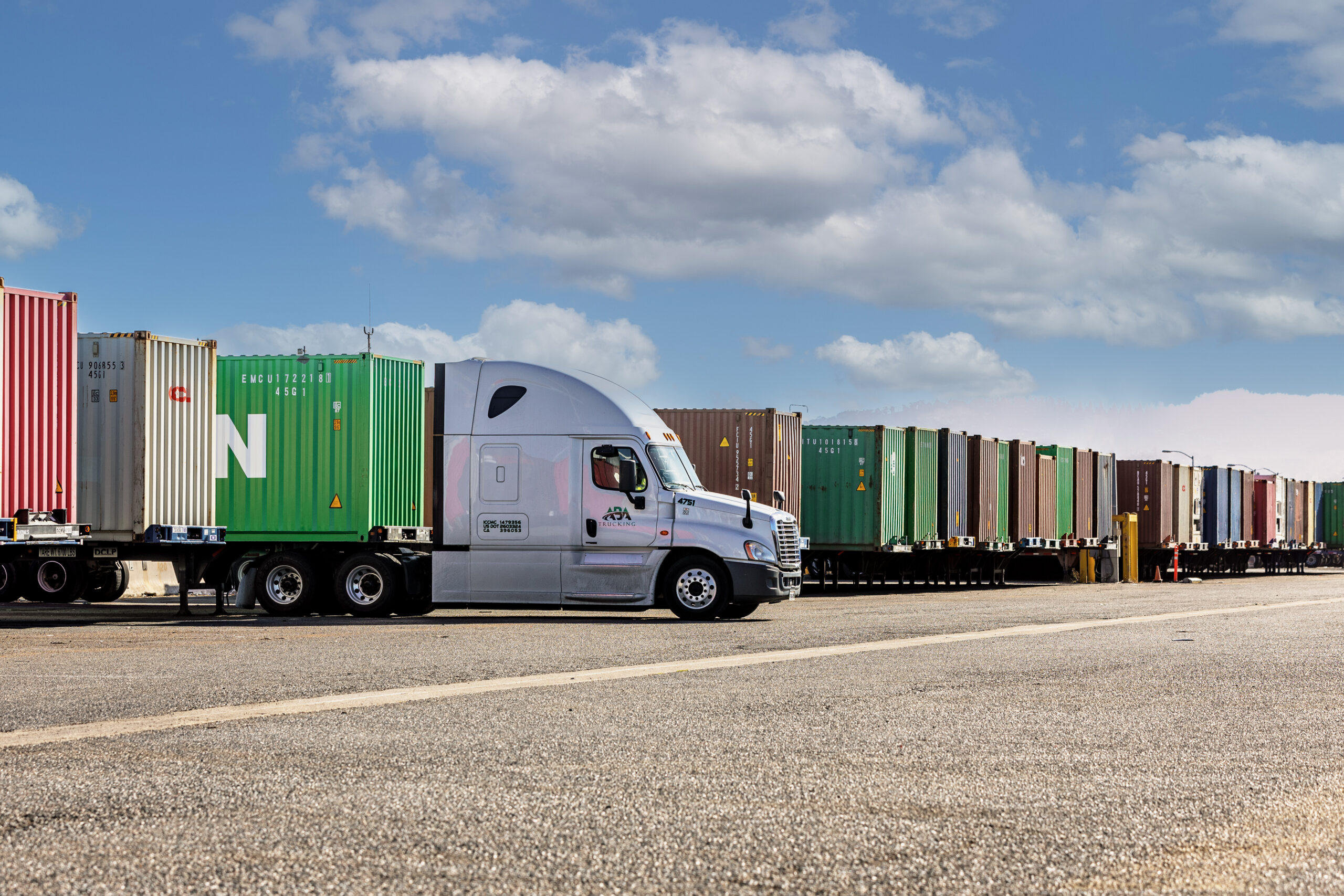There are many factors to consider when vetting Third Party Logistics (3PL) providers, including areas of operation, technology integration, reliability, ability to scale and more. One factor to understand how an operation can scale to support your demand, is learning if your drayage partner is an asset-based carrier or non-asset based. Other areas we often see our clients evaluate are capabilities such as, does the 3PL you’re working with have transloading facilities, chassis programs, and monitoring to help control the flexibility of your supply chain?
Today we’ll focus on the differences between how asset-based vs non-asset-based providers support supply chain operations.
Asset-Based vs. Non-Asset-Based Defined
In the logistics industry, understanding the advantages and disadvantages of each carrier is key to selecting the right fit for your business. Asset-based carriers own and manage all their equipment, such as their trucks, chassis, and storage facilities. This ownership provides a full suite of services from packaging and storage to inventory control and transportation. The asset-based model allows the carrier to offer consistent pricing and service quality, often making them a reliable choice for shippers seeking stability and direct control over their freight. However, their capacity and geographic coverage are limited by their own assets, potentially leading to challenges in scalability and flexibility during peak demands or in specific locations.
On the other hand, non-asset-based carriers, or freight brokers, operate without owning physical transportation assets. Instead, they leverage a vast network of partner carriers to match beneficial cargo owners (BCOs) with the most suitable transportation providers. This model allows non-asset-based carriers to adapt to changing market demands and to find transportation solutions in virtually any location, often at competitive prices. While non-asset-based carriers may not offer the same level of direct control over the freight as asset-based carriers, reputable freight brokers maintain high standards of quality through stringent partner selection and monitoring processes.
However, not all non-asset-based carriers are created equal, which is why it’s critical to know your carriers’ capabilities. Additionally, with technological advancements, many non-asset-based carriers offer full tracking of the movement of goods and provide origin to destination visibility. Non-asset-based carriers can also have assets, they may just not have every asset. These carriers are a hybrid and are considered asset-light or “asset lite” carriers.
In the case of GSC, a hybrid between non-asset and asset-based carrier, this looks like having a warehouse and transloading facilities, chassis for any weight cargo, and technology to track cargo, but not owning trucks. While not owning trucks gives us the flexibility to meet any demand, even in peak season, we also maintain relationships spanning multiple decades with our dedicated carriers.
Adaptability and Flexibility
While asset-based carriers possess the inherent stability of owning their fleets and equipment, their ability to swiftly respond to sudden market changes are constrained by their fixed assets. Conversely, non-asset-based carriers excel in adaptation, unrestrained from the limitation of owned assets. In the cases where they own some assets, this gives them a base they can easily expand upon. Non-asset-based carriers can tap into an extensive network of partners to find immediate solutions and ensure shipments are efficiently routed, even in the face of last-minute changes or specific location requirements. This flexibility is crucial for shippers seeking to navigate the complexities of the modern supply chain industry, making non-asset-based carriers an increasingly preferred choice for businesses prioritizing the ability to scale services in alignment with dynamic market conditions.
Cost and Quality
Another consideration when choosing carriers involves analysis of cost and quality. Non-asset-based carriers provide significant advantages in both these areas when compared to their asset-based counterparts. When factoring in cost, companies such as GSC, offer a competitive advantage due to the ability to select different motor carriers from the database of drivers we work with and we have other assets, such as transloading facilities located on or near port property. This asset-light hybrid approach offers us a market edge due to our ability to dip into the assets we own and supplement with additional assets when needed. Our network of motor carriers, which we’ve worked with for decades, allows us to keep unexpected costs low, leading to potentially lower prices for BCO’s. This is a stark contrast to asset-based carriers who must cover the overheads associated with owning and maintaining their fleet, regardless of demand.
For BCOs, the choice between asset-based carriers and non-asset-based carriers comes down to understanding the 3PL you’re choosing to work with, and the unique demands of your supply chain operations. While asset-based carriers offer the benefit of a single-provider solution with predictable pricing, non-asset-based carriers excel in their ability to provide tailored solutions across diverse geographic regions and fluctuating market conditions, often making non-asset-based carriers a more adaptable choice for shippers with dynamic needs. Companies such as GSC, by efficiently managing their networks and focusing on strategic partnership, can deliver cost-effective, high-quality logistics solutions that meet the dynamic needs of today’s BCO’s.
At GSC, we’re excited to remain on the frontlines of the ever-changing supply chain and to see what the future has in store. Curious how GSC leverages our business model to efficiently deliver your business needs? Check out our services and solutions here.




